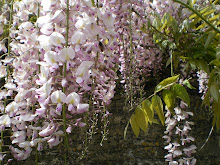On the 10th of February 2008, Tempo Magazine, Indonesia’s leading weekly magazine, published its issue depicting former President Suharto and his family mimicking Leonardo da Vinci’s painting of the Last Supper. The cover was initially created as a tribute to the President who had recently passed on.

In the Tempo's version of the Last Supper, President Suharto replaces Jesus Christ as the central figure In the Tempo version, President Suharto replaces Jesus Christ as the central figure and the apostles are represented by his family. The image drew criticisms and anger from Christians and religious groups in the country as they took offence.
 (Source: Indonesia Matters 2008)
(Source: Indonesia Matters 2008)
Shortly after, Tempo magazine ran an apology saying that “we did not intend to hurt Christians”. Toriq Hadad, editor of Tempo, was quoted as saying that they were only inspired by the composition of the painting. They had no intention of highlighting any religious or cultural elements when adapting the painting (ABC News 2008).
There are 3 key elements which were found when analyzing this issue: informational value, salience and framing (Kress and van Leeuwen 2006). The concept of given and new can also be applied to the picture. Issues of publishing ethics are also key points to this issue.
Informational value is based on where an element in a text is placed: center, left, right, top, bottom or margin (Kress and van Leeuwen 2006). In the Tempo version, Suharto was placed in the centre, taking the place of Jesus. This creates a high informational value as this gives the impression that he is the most important element in the picture.
Kress & van Leeuwen (2006) describe
salience as the most tangible element in the text. Here we can clearly see that Suharto is the most eye-catching element in the picture as he is dressed in white whereas the other characters are in much darker tones. This adds to the salience of his image.
The
framing element is used to distinguish or separate one element from another (Kress and van Leeuwen 2006). In the picture, Suharto appears to be framed by the window behind him. Also, the other characters in the picture are placed surrounding him; giving an impression of his importance.
Publishing ethics also play a part in determining the reactions to this picture. Once the editor was made aware of the controversy surrouding the picture, he immediately expressed his apologies (Weber 2005). This suggests that he has a high standard of ethics and this could lend a hand in the credibilty of his apology.
Reference:'Indonesian weekly apologises over Last Supper Suharto cover' 2008,
ABC News, viewed on 12 November 2009, <
www.abc.net.au/news/stories/2008/02/06/2156269.htm >.
Kress,G & van Leeuwen,T 2006, Reading Images: The Grammar of Visual Communication, 2nd Edition, Routeledge, New York
Weber,J 1995, ‘Ethics in scientific and technical communication’ Wisenet Journal, vol.38 pp. 2-4.
 (Source: Photobucket 2009)
(Source: Photobucket 2009)
 (Source:
(Source: 

 (Source:
(Source: 











 (Source:
(Source:  (Source: businessmentors.blogspot 2006)
(Source: businessmentors.blogspot 2006)


